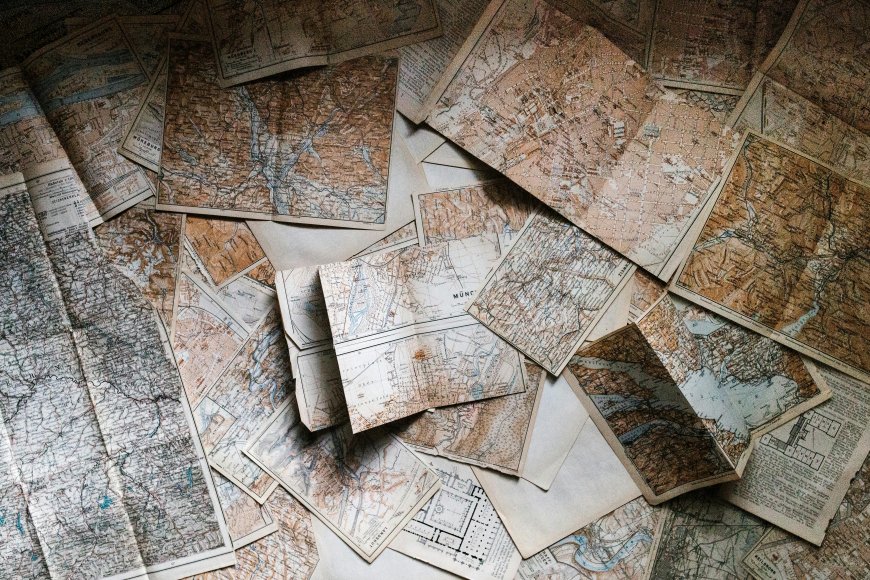How to read maps and use a compass
Reading maps requires skill in understanding the various symbols and markings on them, including geographical shapes, roads, and natural landmarks. The process of reading a map also relies on details such as magnetic north and true north, angles of elevation, and distances. A compass is used to determine directions, relying on the magnetic North Pole. Using a compass, the user can identify cardinal directions such as north, south, east, and west, and consequently navigate their steps accordingly in the outdoor environment.

Reading maps requires skill in understanding the various symbols and markings on them, including geographical shapes, roads, and natural landmarks. The process of reading a map also relies on details such as magnetic north and true north, angles of elevation, and distances. A compass is used to determine directions, relying on the magnetic North Pole. Using a compass, the user can identify cardinal directions such as north, south, east, and west, and consequently navigate their steps accordingly in the outdoor environment.
How to read maps and use a compass
1. Understanding symbols and markings: Understanding the symbols and markings used on maps is essential for efficient reading. These symbols include geographical shapes like lines and dots representing roads and cities, as well as natural features like rivers, lakes, and mountains.
2. Understanding the map legend: Maps provide a legend that explains what the symbols and colors used in them mean. You should have a good understanding of this legend to interpret the information correctly.
3. Orienting with north: Typically, the general orientation of the map is defined with its north. You should be able to identify north, south, east, and west directions on the map.
4. Reading measurements and distances: You should understand how to read scales and distances on maps. Distances are often represented in a specific unit such as miles or kilometers.
5. Terrain and elevations: You should understand how terrain and elevations are represented on maps, whether through contour lines or specific geometric shapes indicating terrain features.
6. Using magnetic north: In addition to true north, you should be able to use magnetic north indicated by a compass to determine directions.
7. Precise location determination: You should master accurately pinpointing locations on maps using geographic coordinates such as longitude and latitude lines.
By grasping these fundamental principles, you'll be able to read maps efficiently and use them effectively for locating positions, planning routes, and exploration.
Interpreting symbols and markings on maps
Interpreting symbols and markings on maps is a fundamental process for understanding the geographic data represented on them, and it is an essential part of efficiently reading maps.
1. Roads and highways: Roads are typically represented by bold lines, and highways may be depicted with double or parallel lines. The colors used in these lines may indicate the type of roads, such as green for main roads and red for highways.
2. Natural landmarks: Natural landmarks include rivers, lakes, mountains, and forests. These landmarks are represented by specific symbols, such as lines for rivers, circles for lakes, and triangles for mountains.
3. Buildings and structures: Buildings and structures like schools, hospitals, and airports can be seen on maps. These landmarks are identified by their own special symbols, such as rectangular icons for buildings and circles for major structures.
4. Important geographic locations: These locations include historical landmarks, tourist attractions, and vital areas such as national parks, museums, and restaurants. Distinctive symbols are used to distinguish these locations on the map.
5. Administrative boundaries: The administrative boundaries of countries, states, and counties are represented by specific lines and sometimes by different colors. These symbols help in identifying the boundaries between different administrative areas.
6. Terrain and slopes: Terrain and slopes are represented by different lines and colors on the map, helping to identify mountainous areas, ridges, and plains.
By understanding these symbols and markings, you can easily and accurately comprehend the geographic data represented on maps, enabling you to read maps efficiently and use them effectively for various purposes.
How to use magnetic north in map reading
Using magnetic north in map reading is considered important for determining directions accurately and effectively.
1. Identifying cardinal directions: Magnetic north provides a reference point for determining the cardinal directions on the map. Using a compass, you can identify magnetic north and then determine other directions such as south, east, and west relative to it.
2. Guiding steps and routes: When you know the directions using magnetic north, you can accurately guide your steps and determine routes on the map. For example, if you're planning a hiking trip in the woods, you can use magnetic north to orient yourself and guide your steps accordingly.
3. Locating landmarks and prominent points: With magnetic north, you can pinpoint landmarks and prominent points on the map more accurately. For instance, if you have a compass and know the direction of magnetic north, you can identify specific locations like mountains or lakes based on the directions indicated on the map.
4. Navigating in adverse weather conditions: Using magnetic north is particularly useful in adverse weather conditions such as fog or snow, where a compass can help you maintain the correct direction and avoid getting lost.
5. Directional planning for strategic purposes: With magnetic north, explorers and travelers can accurately determine directions for strategic planning of their trips and adventures.
By effectively using magnetic north, individuals can read maps better and confidently navigate their steps accurately in outdoor environments.
Determining directions and routes using a compass and maps
Determining directions and routes using a compass and maps is an important process for travelers and adventurers to accurately and effectively navigate.
1. Understanding cardinal directions: Before using the compass and map, it's important to understand the cardinal directions such as north, south, east, and west. This enables you to determine the desired direction based on your destination.
2. Using the compass to determine directions: Begin by orienting the compass so that the magnetic needle points towards magnetic north. Then, use the compass to determine the cardinal directions on the map by aligning the direction of the magnetic needle with the magnetic north indicated on the map.
3. Guiding routes and pinpointing locations: With the compass, you can accurately guide the desired routes on the map. Start by identifying the starting point on the map, then use the compass's indicated directions to determine the route you want to take to reach your destination.
4. Identifying prominent points and landmarks: With the help of the compass, you can accurately identify prominent points and landmarks on the map. Use the directions indicated on the compass to identify specific locations such as mountains, rivers, or cities, and thus determine the optimal route to reach them.
5. Navigating in complex areas: In complex areas such as dense forests or deserts, using the compass is essential for accurately navigating the way and avoiding getting lost.
By using the compass and map simultaneously, you can efficiently and confidently determine directions and routes, making the experience of travel and adventure more enjoyable and safe.
Reading geological maps
Reading geological maps requires a deep understanding of the terrains and geological formations represented on them, and it's an essential process for geologists and those interested in studying the Earth's history and formations.
1. Interpreting colors and symbols: Geological maps rely on using colors and symbols to represent different geological formations such as rocks, geological features, and earth layers. The reader must understand the meanings of the colors and symbols used to identify rock types and geological terrains.
2. Identifying earth layers: Geological maps provide information about the arrangement of earth layers and their different formations. The reader can identify the layers based on the colors and symbols used, understanding the history of the Earth's formation and the changes that have occurred on it.
3. Reading geological slopes and terrains: Geological maps provide information about geological terrains such as mountains, valleys, and slopes. The reader must understand how to read and interpret these terrains based on the symbols used.
4. Analyzing geological structures: Geological maps can illustrate specific geological structures such as faults, folds, and fractures. Analyzing these structures relies on understanding the symbols and markings used to represent them on the map.
5. Identifying exploration sites: With the help of geological maps, explorers can identify potential exploration sites to find minerals, oil, natural gas, or other natural resources.
With a deep understanding of the colors and symbols used, and the analysis of layers and geological terrains, individuals can read geological maps efficiently and better understand geological formations and the Earth's history.
Using a compass for navigation in changing natural environments
Using a compass for navigation in changing natural environments is important for travelers and adventurers, and it can be crucial to staying on the right path.
1. Determining directions using the compass: The compass can help you identify cardinal directions like north, south, east, and west. Before using the compass, make sure you are familiar with the basic directions on the map.
2. Noting the compass's fluctuating direction: In changing natural environments like dense forests or deserts, the compass's performance may be affected by factors such as rugged terrains or complex magnetic fields. Therefore, you should be aware of the effects of these factors on the compass's operation and adjust your direction accordingly.
3. Considering weather and environmental conditions: In variable natural environments, compass reading may be affected by weather conditions such as fog, heavy rain, or snow. Terrain may also change due to natural factors like floods or mudslides. Therefore, you should be cautious and alert to adjust your course according to the surrounding conditions.
4. Navigating using map landmarks: In addition to using the compass, you can also rely on map landmarks to identify routes and prominent natural features. Use the compass to confirm the directions shown on the map and guide your steps accordingly.
5. Training and practice: Before embarking on a journey, train yourself in using the compass in different conditions and natural environments. The more familiar you are with the compass's operation and the effects of different conditions on it, the better your ability to read maps and navigate effectively.
By using the compass with caution, discernment, and training, you can navigate in changing natural environments with confidence and safety, facilitating the process of reading maps and determining routes effectively.
Tips and Strategies to Improve Map Reading and Compass Skills
1. Practical Practice: Regularly practice map reading and compass use in different natural environments. The more hands-on training you do, the more your skills and confidence in navigation and location identification will increase.
2. Study Guides and Resources: Review map guidebooks and online tutorials that provide explanations and tips for effective map reading and compass use. You can also benefit from books and available resources to learn more concepts and techniques.
3. Train in Different Conditions: Train yourself to read maps and use the compass in a variety of environments and conditions, including mountains, forests, deserts, and waterways. This will help you deal with different challenges you may encounter.
4. Interact with Nature: Enjoy interacting with nature while using the compass and reading maps. Observe natural landmarks around you such as trees, stars, and rivers, and use them as references to determine your directions and locations.
5. Collaborative Work: Participate in field trips or activities with groups or friends interested in adventures and exploration. Collaborative work can enhance learning and help exchange experiences and ideas.
6. Seek Expert Assistance: Don't hesitate to seek help from experts in the field or organizations or educational centers that offer training courses in map reading and compass use. They can guide you and provide advice to better develop your skills.
With continuous practice and hands-on training, you will notice improvement in your map reading and compass skills, helping you explore the outside world with confidence and adventure.
Summary
Reading maps and using a compass are two essential skills for navigation and exploration in different environments. When reading maps, the user must understand the symbols and colors used to represent geographical features and terrain, in addition to identifying the main directions and distances. Using a compass requires an understanding of magnetic north and how to determine directions based on it, facilitating accurate route navigation and location identification. With continuous practice and hands-on training, individuals can improve their skills in map reading and compass use, enabling them to navigate with confidence and efficiency in various locations.
Sources
1. National Geographic - Map Reading Basics An article on the National Geographic website offering tips and basic information on how to read maps in general.
2. U.S. Geological Survey (USGS) - Topographic Maps The USGS website provides detailed information on how to read and use topographic maps for navigation and understanding terrain.
3. REI - How to Use a Compass A guide from the REI website explaining how to correctly use a compass to determine directions and navigate in different environments.
4. Ordnance Survey - Map Reading Guide A guide from Ordnance Survey providing information on map reading and understanding the symbols and signs used on maps.
What's Your Reaction?




































































































































































